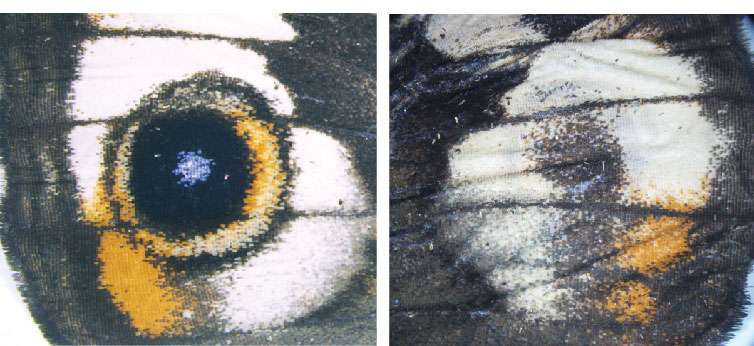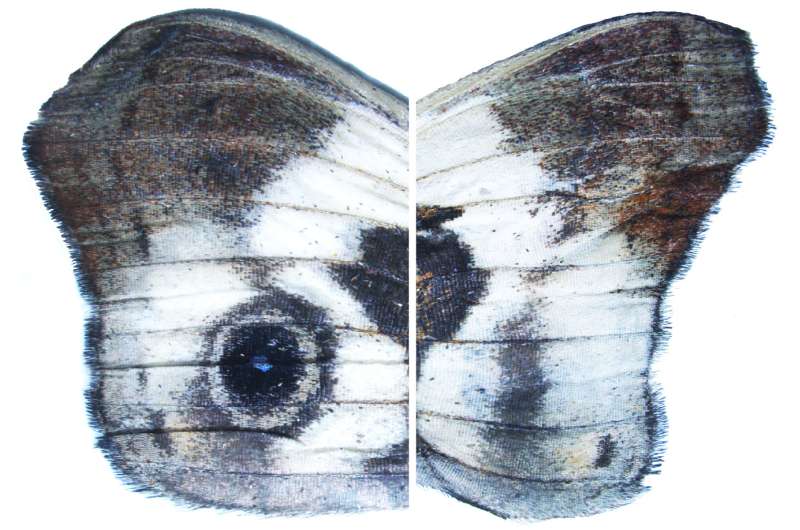How the butterfly got its spots

By tweaking just one or two genes, Cornell University researchers have altered the patterns on a butterfly's wings. It's not just a new art form, but a major clue to understanding how the butterflies have evolved, and perhaps to how color patterns - and other patterns and shapes - have evolved in other species.
By using the new method of CRISPR genome editing, researchers cut out a gene known as spalt, and produced a butterfly lacking the large round markings known as eyespots. In another experiment, they removed a gene known as distal-less and produced more and larger eyespots. The experiments also produced changes in other parts of the wing design.
The distal-less gene in particular revealed itself as a jack-of-all-trades gene that plays roles in shaping several parts of the body. Deleting it not only caused the butterfly to have extra eyespots, but to have shorter legs and antennae.
"People suspected these genes had something to do with wing patterns but nobody had proved it," said Robert Reed, associate professor of ecology and evolutionary biology. "It probably takes dozens or hundreds of genes to make an eyespot, so it was remarkable to find that only one or two genes are required to add or subtract these complex patterns. It is a beautiful demonstration of how animals are assembled as modules, much like a model kit." Reed and postdoctoral researcher Linlin Zhang report their results in the TK issue of the journal Nature Communications.

Butterfly wing patterns are of special interest to evolutionary biologists because they provide an easily accessible model of how natural selection chooses from many possible variations. "Variation is the raw material of evolution," Reed said. CRISPR genome editing technology offers great potential for understanding how this variation originates he added.
Butterfly wing designs can be a defense against predators. Some butterflies are poisonous to birds (or maybe just taste bad) and birds can learn to recognize the designs that say "I'm not good to eat." Other butterflies have evolved to mimic dangerous species. The large round markings on some butterfly and moth wings have come to be called "eyespots" because the spread out wings of the insect may look to a predator like the face of something big and dangerous. The designs also influence mate selection.
The researchers worked with the butterflies Vanessa cardui, known as the "Painted Lady" or "Cosmopolitan" and Junonia coenia, the "Buckeye." Their work was supported by a grant from the National Science Foundation.
Journal information: Nature Communications
Provided by Cornell University




















